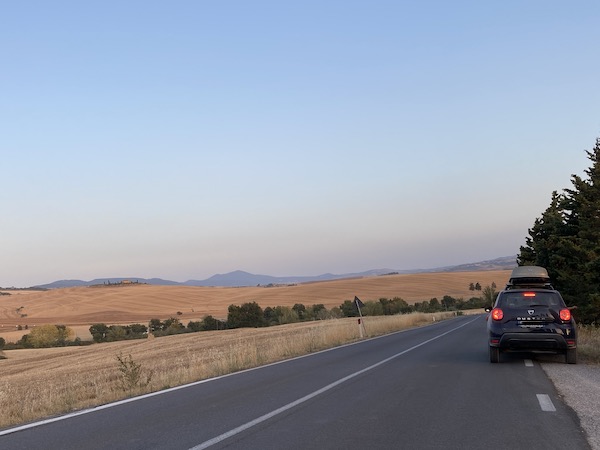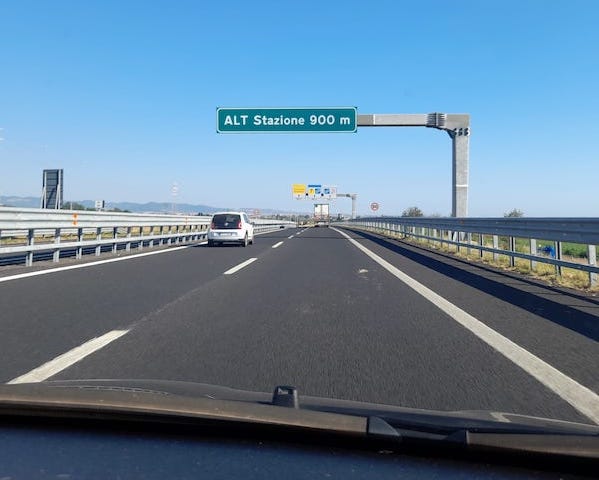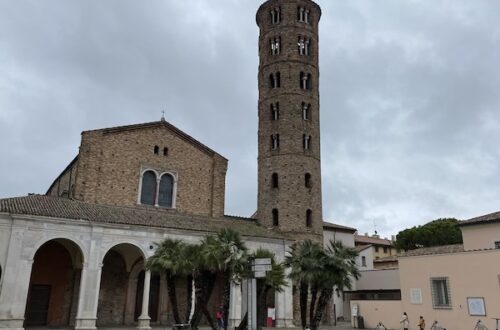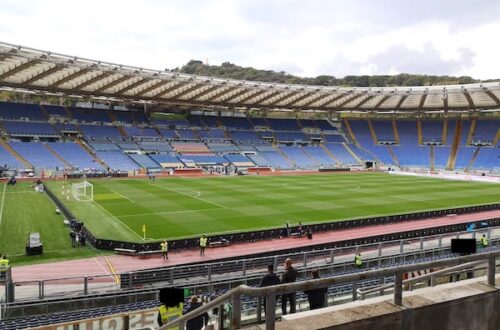
Driving in Tuscany: all you need to know for a stress-free trip with kids
All you need to know about driving in Tuscany: when to get a car, what to expect from the roads, how to rent a car, car seat rules for kids + how to avoid the dreaded fines from restricted driving areas.
Tuscany is one of the areas of Italy where a car comes in handy, especially if you are traveling with children.
While many of its pretty cities and towns are connected by a good network of trains and buses, many of the things the region is most known for are best accessed by private vehicles.
Farms (animals! Picnics! Pools!), adventure parks, vineyards, thermal springs and many hilltop medieval towns are hard, if not impossible, to reach without a car and country stays also make a car a necessity.
Of course, you don’t need to drive yourself to have a car, as there are services called NCC (private car service) that can take care of your transport needs.
However, these services are very expensive and need advance booking, and are therefore not suitable for everyone or if you want some freedom and flexibility.
For a more budget-friendly option, I recommend renting your own car.
I know driving in Italy scares many (often too much, as often the only stories shared online are the bad ones; no one shares unremarkable driving experiences!); so, today, I want to share our experience of driving in Tuscany and my best tips.
As usual, these tips are based on my own experience. I am from Rome and drive up to Tuscany several times a year, plus have taken many vacations in Tuscany that required a car.
So, when I say my tips are based on my experience, I mean it!
Driving in Tuscany – in brief
You want to have your own car if staying in a country stay, planning on visiting farms and castles, or venturing beyond main towns.
The roads in Tuscany are generally very good and well-maintained. There is a mix of motorways, national roads (strade statali) and smaller roads.
You do not need a special type of car to drive here; normal city cars are ok in most cases. Exceptions are usually private access roads to remote properties. Ask your accommodation host if in doubts about car accessibility (in most cases, there is no issue as hosts make sure to be easy to reach).
Town centers are closed to car traffic of non-residents, and fines for accidentally entering them are steep. See below for our tips on how to identify them and stay clear of them!
Renting a car in Tuscany is no different than renting anywhere else. The region is served by many well known car rental companies and you can rent and drop back in the same place or different locations. I am going to give an overview of my favorite options below!
If driving in Tuscany with kids, make sure you abide by Italian car seat rules.

The roads of Tuscany: what is driving there like?
One of the biggest worries I hear about driving in Tuscany is about the roads, how large they are and how bendy.
Overall, I feel reassured about the roads in Tuscany!
First of all, don’t inmagine the region all being meandering medieval alleys.
The region has motorways, large national roads (strada statale) and local roads (strada provinciale) that are made for cars and well kept.
These are very much comparable with Freeways / Highways in the US or mtorway in the UK or EU. The one thing may need to familiarise yourself with are the toll booths, on autostrade, but I can help with that!
If you want to know what an Italian motorway is like and how the toll system works, you can read here >>> all about Italian toll roads and how they work (with photos)
Popular roads in Tuscany are:
| Name of road | Type |
| A1 Rome to Florence (the to Milan) | Motorway |
| A11 Florence – Pisa (Firenze Mare) | Motorway |
| A12 Genoa – Rome | Motorway |
| E80 coastal route | National Roads |
| SP 146 Pienza / San Quirico (scenic route) | Provincial road |

Access routes to hilltop villages can be meandering but they are meant for cars: just go slow and follow the signs for parking areas.
Need to know: access to hilltop villages often involves driving up (and down) beds that can cause motion sickness in sensitive kids. Each town is different but if car sickess happens if your family, in areas such as Chianti or if planning on hilltop village visitis, being prepared with remedies is wise.
Small towns have small roads that are tricky by car but you do not usually enter them.
Parking areas are provided outside of the town centers and this means the center is pedestrian friendly and you can avoid the stress of roads built before cars were invented!
That said, if you are used to mostly motorway driving or come from a place with large spaces and roads, you will find our Tuscan roads much smaller than what you are used to.
The best way to avoid stress on these roads are:
Do not get a huge car. Driving a big SUV can get very stressful, especially if you get a wrong turn and need to reverse or do a you turn. I recommend you get the smallest possible car for your needs.
Take your time – If a road looks too small for you to feel comfortable or you think you may be entering a restricted area, turn on your hazrad lights: this will alert people something is not ok and will buy you time to figure out the situation.

Need to know: since Tuscany has large rural areas, it is possible very remote properties and natural sites pose more tricky access conditions. If you are venturing alone into a remote area which is served by smaller roads (google maps will tell you) I always find it best to first speak with a local such as your host as they are the best people to let you know about current driving conditions. This is not something you need to worry about for towns and well know localities.
Where to rent a car in Tuscany and need to know
Now that you are, hopefully, reassured about driving conditions in Tuscany, you may wonder where it is best to rent a car and how to go about it.
So let’s get into it!

Tuscany is a large region so where it is best to rent from depends on where you need to go. In general, the best places to rent in Tuscany are:
Florence, either at the airport or in the city center. The airport has the huge advantage of saving you from inner city driving (never fun in a city you don’t know) and it also saves you from the headache of figuring out the ZTL restricted aera issue, which can be tricky at drop off.
Pisa, another excellent pick up / drop off point.
These three location are, in my opinion, the best as they are easy to reach by train and have a larger selection of cars, thanks to being transport hubs and airport cities.
They also tend to have more generous opening hours for pick up and drop off than smaller towns which often have limited opening hours and may be closed on Sundays and public holidays.
Other places you can consider to rent a car locally:
Chiusi: this is a great option if you want to explore Val d’Orcia and the South as you can reach it from Rome by train with relative ease.
Arezzo: also an excellent getaway to southern Tuscany, Cortona and even Umbria
In terms of the best companies to rent cars in Tuscany, I had the best experience with:
Avis – I have always had good experiences with them and have bneen able to rent car seats for the kids as well. They have offices in many locations. They offer manual and automatic cars.
Hertz – also excellent. They have one of the biggest selections of car seats for kids i have encountered in Italy and we always had great trip with them. Like Avis, they have offices in several locations, including small centers. They offer manual and automatic cars.
Need to know: to rent a car in Italy you usually need to have a credit card. You also need a valid driving licence and, possibly, additional documents, depending on circumstances.
Read also >>> How to rent a car in Italy
Documents needed to drive in Tuscany
The documents you need to drive in Tuscany and Italy depend on specific circumstances (drivng licence issuing authority being a big one, but not the only one).
For information on the exact documents needed, ONLY rely on official information! Please do not rely on blogs for something so crucial, there is a lot of wrong info out there!
Here are OFFICIAL links:
Documents to drive Italy if you are from the US – Source: US Embassy
Driving in Italy if you are from Australia – source: Australian Embassy
Driving in Italy if you are from Canada – source: Canadian Government
Driving in Italy if you are from the UK – source: UK Government
Need to know: the needs for additional documents, when relevant, are dictated by the law and must be followed to be driving legally. The rental agency may / may not ask you to have one on you to pick up the car but if you get stopped and you do not have one, you will be be in breach of the law. Always have all relevant documents in order and with you.
Using kids’ car seats in Tuscany
In Italy, kids under and twelve years of age and/or under 150cm tall must use a EU approved car seat, by law.
The best ways to source an appropriate car seats are:
Buy an EU approved one. Depending on the height of your child, this may be a baby seat, toddler seat, high back booster (up to 125cm height) or cushion style booster. Good Italian shops are Chicco and Prenatal, also online.
Rent with the car. If you do this, meke sure you specify really well what size you need. The downside of this approach is that you don’t know how the seat was kept; I know this is anecdotal but we always got good ones from the rentals above
Rent from a provider such as Bobonbo, a private company offering baby rental options in several locations in Italy (they can drop off to you)
Parking in Tuscany
As I mentioned above, town centers in Tuscany tend to be closed to non residents cars, and equipped with parking areas.
Parking areas are usualluy well signposted with blue street signs with a big white P on them.
They start appearing as you enter the town and they lead to parking areas that can be manned / unmanned / open air / covered depedning on location.

Parking are in most cases pay and display. In these cases, it is handy to have some cash as not al machines read cards.
If you park on street, be careful about the colors of the lines on the side of the road!
- Blue lines are paid parking
- White lines are free parking (unless there are additional signs specifying otherwise)
- Yellow lines are reserved spaces for the disabled
Please be careful with where you park as fines are steep!
Avoiding ZTL areas (restricted access areas)
A frequent ‘horror travel story’ from people coming back from a driving vacation in Tuscany is about getting fined for entering the dreaded ztl area, the restricted access areas in the center of towns.
Indeed, these area can be tricky and fines are steep (and yes, they follow you home and get more and more steep with time if ignored); however, once you know what you are looking for, you already have an advantage!
Ztl stands for ‘zona traffico limitato’ aka limited traffic area. These are inner city areas that are only accessible by residents who have a specifi permit for them.
As a visitor, you are unlikely to be able to get hold of a permit. In some cases, for insance if you need access for disabled passengers, you can contact the minucipality: provisions are often in place (ask each town).
For instance, this is the process for Siena >> https://www.comune.siena.it/sites/default/files/2022-01/The%20ZTL%20%28Restricted%20Traffic%20Zone%29%20-%20English.pdf
Some hotels have permits they can issue to you for the purpose of getting to them: if so, get confirmation in writing and exact directions on how not to be fined, before confirming your booking.
Private rental owners are usually not able to equip you with a permit.
If you are visiting a town for a day, stay out of the ztl area to avoid any fining risks.
Ztl areas are singposted usually by a mix of light signage/ traffic lights and standard road signs. For instance in Pisa, the access to ztl looks like in the photo below.

Places in Tuscany you can visit without a car
I hope the info above has helped you getting a better idea of what driving in Tuscany is like but I can hear the question in the air: is there anywhere in Tuscany I can visit without a car?
Of course!
You can find here >>> all my tips for visiting Tuscany without a car.
At a glance, great places in Tuscany you can reach by train are:
These are great towns / cities you can also use for day trips.
You can also reach many more smaller centers including Siena, Cortona, Arezzo, Castiglioncello, San Miniato and many more; however, since these towns are mostly famous for offering access to the countyside, they are not great as a base without a car as you can reach them, but then you are limited in what you can reach from there. They are still excellent options for day trips though!




